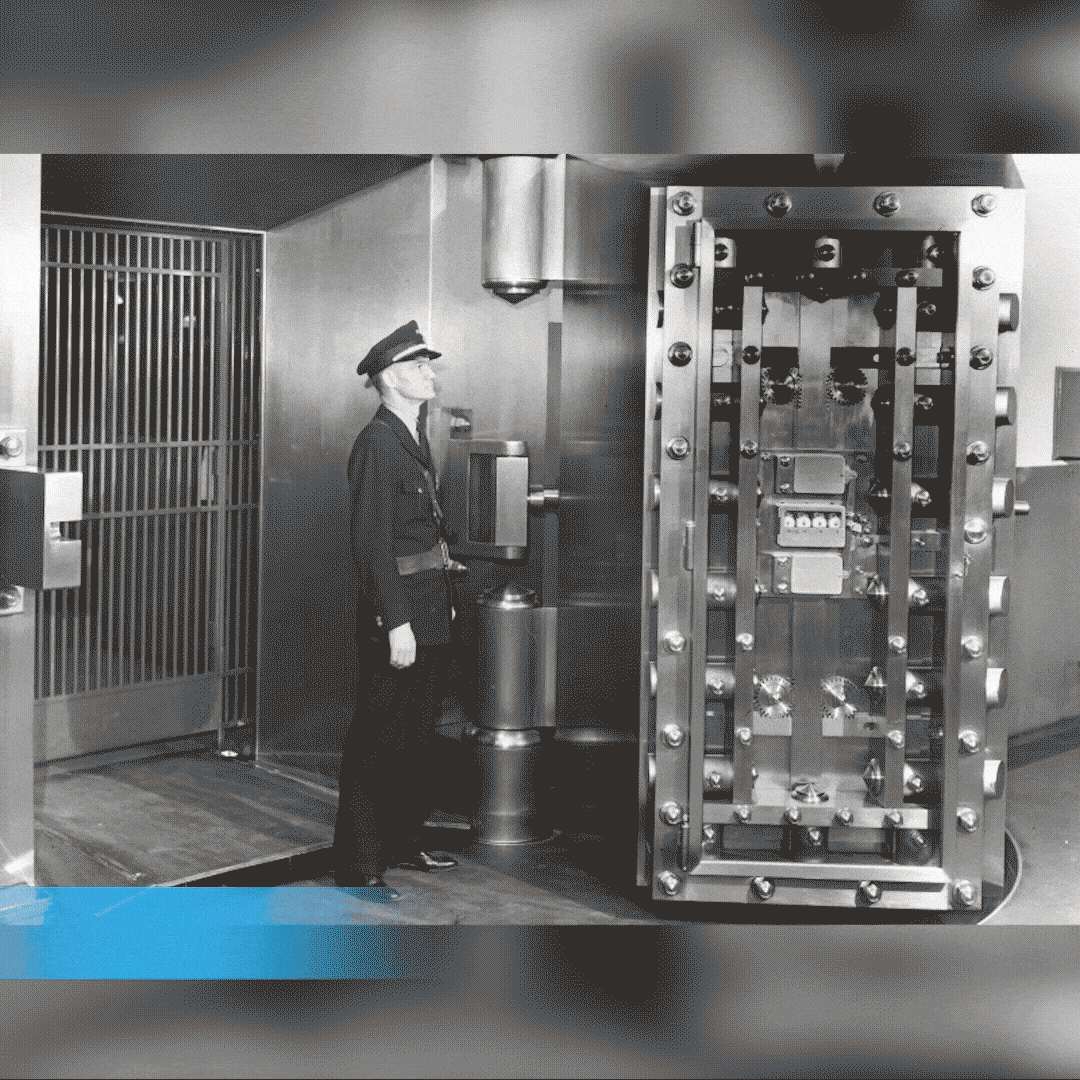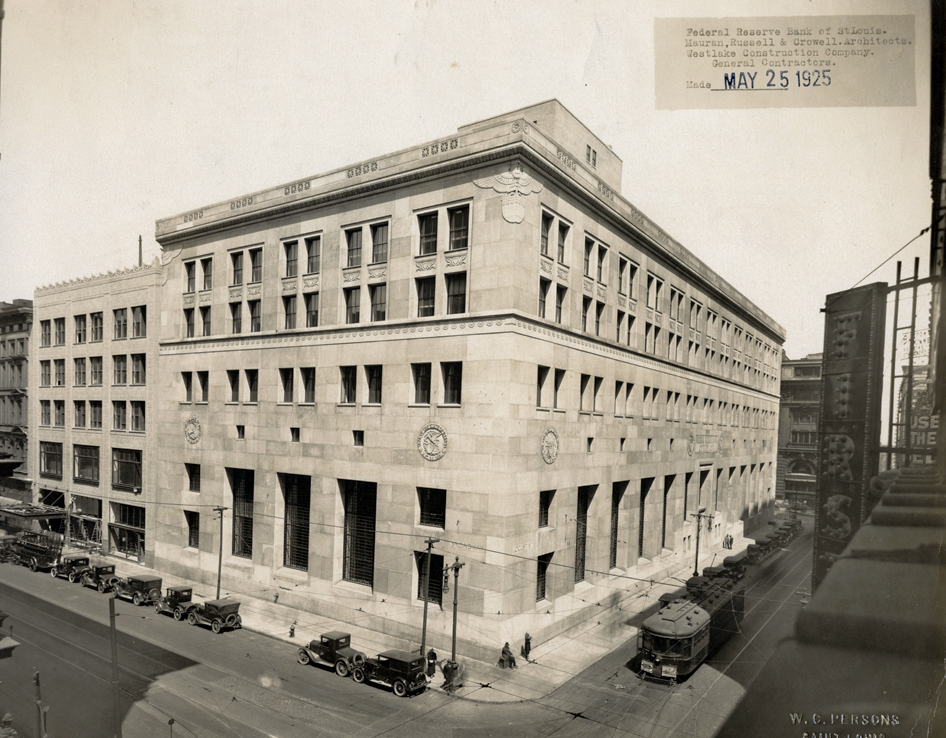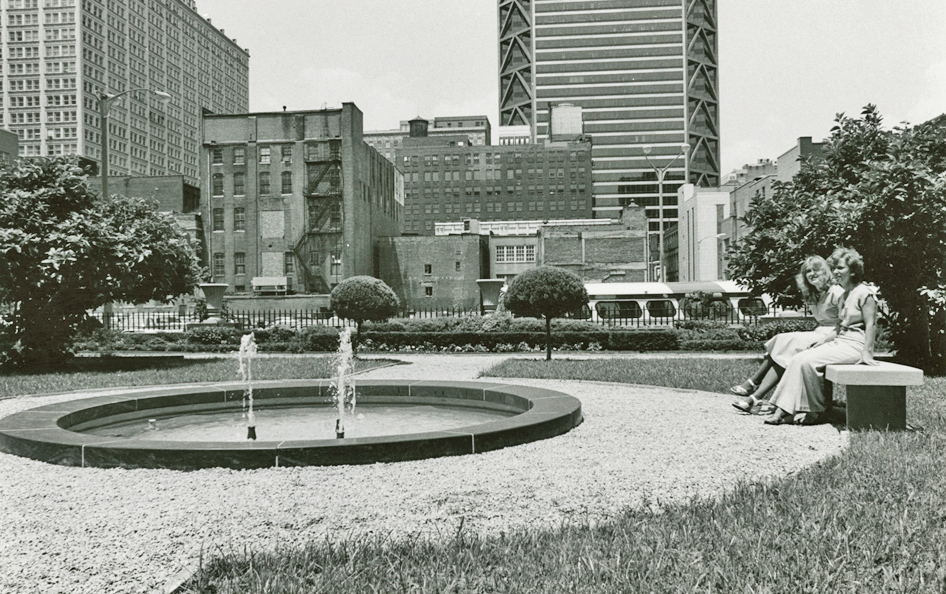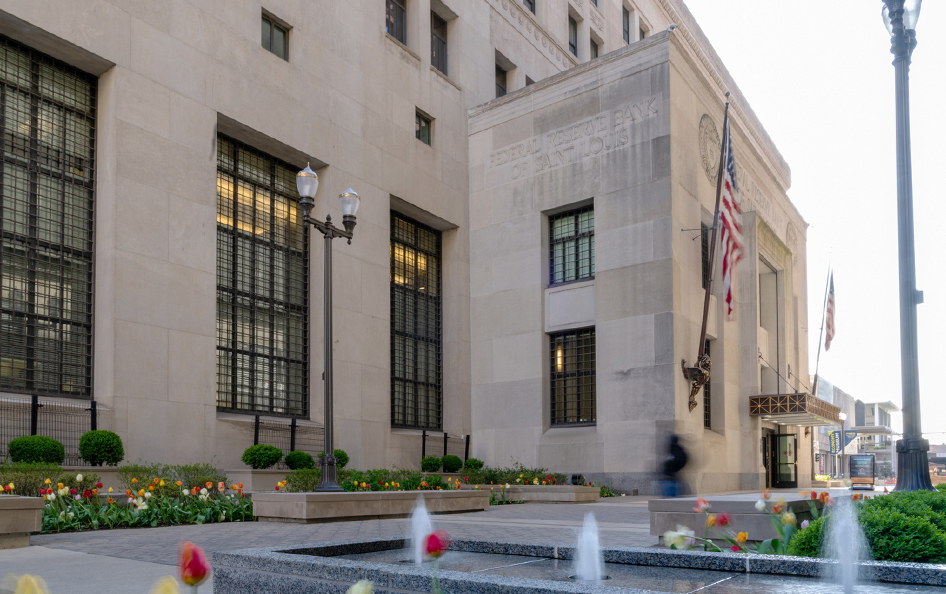Building on a Legacy of Service
As the Federal Reserve Bank of St. Louis building in downtown St. Louis turns 100 this year, we reflect on how our building tells the story of the past, present and future public servants who are dedicated to a strong and resilient economy for all.
Commemorating a Century in Our Downtown St. Louis Building
In 1913, the Federal Reserve Act created the Federal Reserve System, which includes the Board of Governors in Washington, D.C., and 12 Federal Reserve banks around the country. The St. Louis Fed is one of those Reserve banks.
The St. Louis Fed opened on Nov. 16, 1914, in leased quarters at the Boatmen’s Bank Building in downtown St. Louis. In 1915, the St. Louis Fed relocated to the National Bank of Commerce Building.
In 1923, construction began on the current headquarters building, which sits at Broadway and Locust streets in downtown. The site was selected to be in the center of St. Louis’ “Financial Row,” a strip of Broadway that included First National Bank, St. Louis Union Trust Co., Mississippi Valley Trust Co., Boatmen’s Bank and the Mercantile Commerce Building.
The St. Louis Fed’s main building opened its doors June 1, 1925.
While we’re proud to be a fixture in downtown St. Louis for more than a century, our building is just that—a construction of granite from Rockville, Minn., and limestone from Bedford, Ind.
What’s made it special is the thousands of public servants who have entered its doors—and those of our branch offices in Little Rock, Ark., Louisville, Ky., and Memphis, Tenn.—to work for the people of the Eighth Federal Reserve District and the nation. (The Eighth District includes all of Arkansas, most of Missouri, and parts of Illinois, Indiana, Kentucky, Mississippi and Tennessee.)
A Legacy of Serving the Public
For more than 100 years, Federal Reserve Bank of St. Louis employees have supported the nation’s monetary policy, financial system, payments system, U.S. Treasury and the communities we serve.

Some of the St. Louis Fed’s employees in the main building over the years: In 1940, a law enforcement officer guards the vault. The vault door weighs more than 40 tons. (Image from St. Louis Globe-Democrat collection at the St. Louis Mercantile Library at the University of Missouri-St. Louis.) In 1964, employees clock in for their shifts. In 1967, an employee hands a document through a credit window on the first floor.
St. Louis Fed employees work to be a trusted partner in the Federal Reserve System by:
- Conducting the nation’s monetary policy. The St. Louis Fed convenes advisors, engages Main Street and gathers information from across the Eighth District to understand local economic conditions. That information is shared at Federal Open Market Committee meetings, making sure the voices and experiences of those throughout our seven-state region are reflected in monetary policy discussions.
- Fostering a safe, sound and stable financial system. Through the work of our Supervision division, St. Louis Fed staff members are responsible for examining and inspecting state-chartered banks, bank holding companies, savings and loan holding companies, and financial holding companies.
- Advancing a safe, efficient and accessible payments system. The St. Louis Fed supports the payments system through our currency and coin operations. This work ensures the currency circulated in our District is high quality and authentic, with unfit currency removed from circulation.
- Promoting consumer protection and community development. Our community development team works at the local, regional and national level to promote economic resilience and mobility for all individuals and communities.
- Supporting the U.S. Department of Treasury as a fiscal agent. St. Louis Fed employees provide financial services to the federal government.
(For more examples of the work the St. Louis Fed does in service to the public, check out the “Our People, Our Work” section of our annual report.)
Historical Photos of the Federal Reserve Bank of St. Louis Building
Our main building’s consistent presence has served as a symbol of the Bank and its employees over the years. Watch this timelapse video created for employees of construction of the St. Louis Fed building in our digital library, FRASER.
Like our employees, the building has grown and changed over the years. Here are a few highlights.

The Federal Reserve Bank of St. Louis building opened in 1925. In the image above, you can see several of the eight seals cut into the limestone. Seven of the seals represent the seven states in the Federal Reserve’s Eighth District, and the final seal is for the Eighth District.

In 1944, the St. Louis Fed bought the former Nugent’s Department Store adjacent to the Bank, adding 25,000 square feet that opened in 1946. The store is at left in the 1925 photo.

In 1950, the St. Louis Fed established a garden and built a parking garage with 150 spaces. At right in the photo, two people relax in the garden in 1978.

After 9/11, Locust Street was closed to increase the security perimeter around the St. Louis Fed building and to allow for the construction of a new security vestibule and entrance.
This blog explains everyday economics and the Fed, while also spotlighting St. Louis Fed people and programs. Views expressed are not necessarily those of the St. Louis Fed or Federal Reserve System.
Email Us


